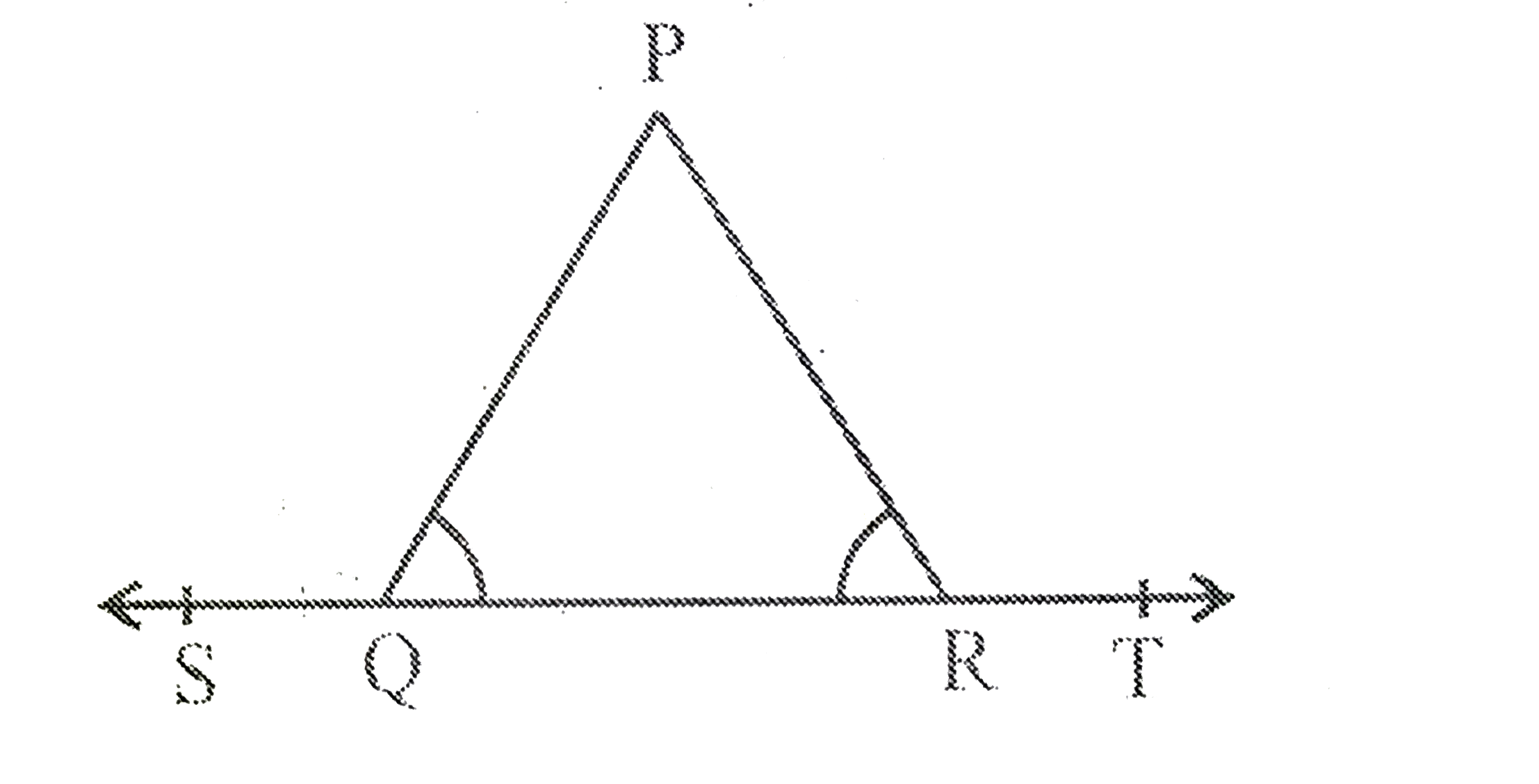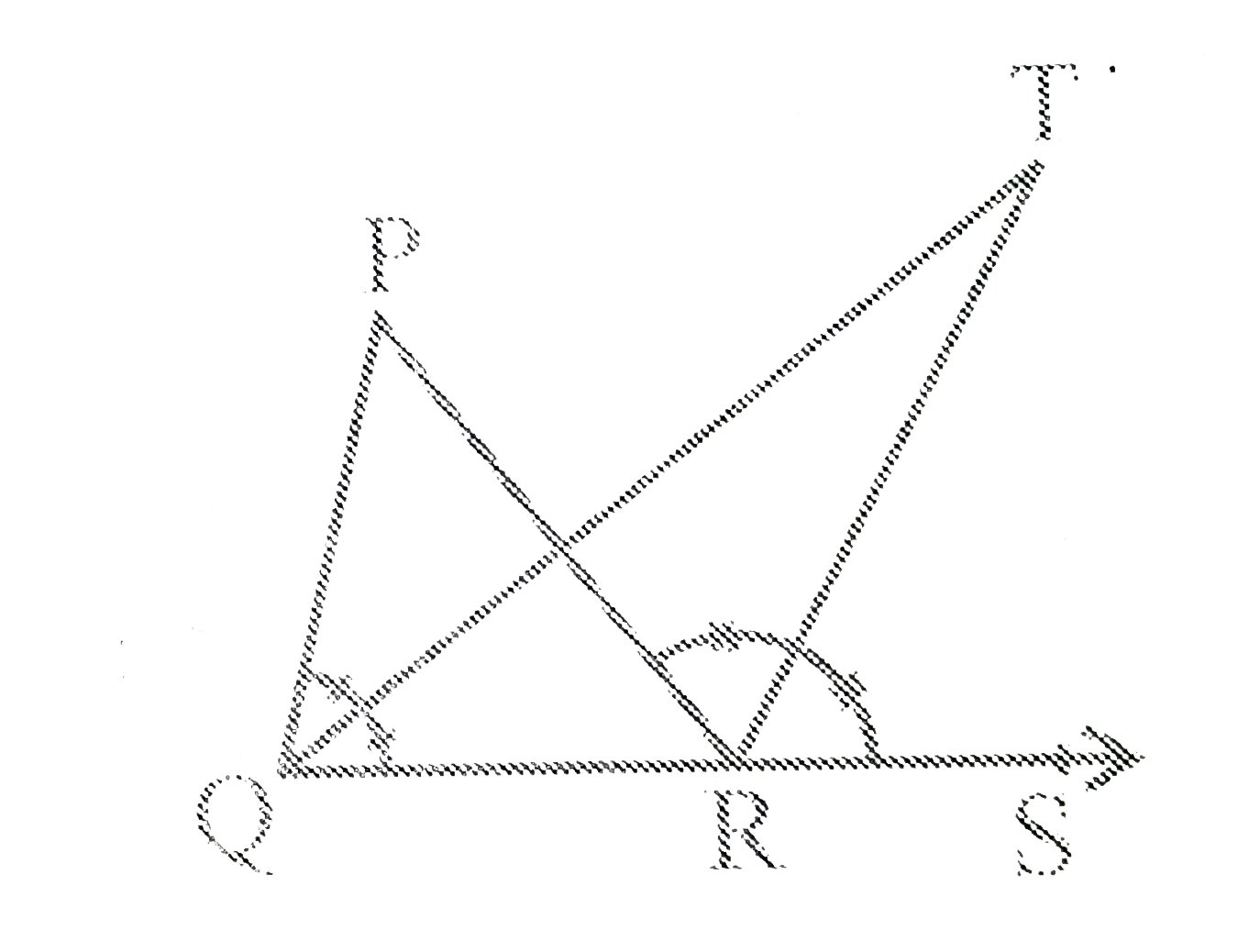In Figure, ∠PQR= ∠PRQ, then prove that ∠PQS= ∠PRT.
To prove that ∠PQS=∠PRT given that ∠PQR=∠PRQ, we will follow these steps:
Step 1: State the Given Information
We are given that:
∠PQR=∠PRQ
Step 2: Understand the Geometry
Since ∠PQR=∠PRQ, triangle PQR is an isosceles triangle with PQ=PR. The angles opposite to equal sides are equal.
Step 3: Express Angles in Terms of 180 Degrees
In any triangle, the sum of the angles is 180∘. Therefore, we can express ∠PQS and ∠PRT as follows:
1. For ∠PQS:
∠PQS=180∘−∠PQR
(This is because PQS and PQR are supplementary angles.)
2. For ∠PRT:
∠PRT=180∘−∠PRQ
(This is also because PRT and PRQ are supplementary angles.)
Step 4: Substitute the Equal Angles
Since we know ∠PQR=∠PRQ, we can substitute ∠PRQ with ∠PQR in the equation for ∠PRT:
∠PRT=180∘−∠PQR
Step 5: Conclude the Proof
Now we have:
∠PQS=180∘−∠PQR
and
∠PRT=180∘−∠PQR
Thus, we can conclude that:
∠PQS=∠PRT
This completes the proof.
We are given that:
∠PQR=∠PRQ
Since ∠PQR=∠PRQ, triangle PQR is an isosceles triangle with PQ=PR. The angles opposite to equal sides are equal.
In any triangle, the sum of the angles is 180∘. Therefore, we can express ∠PQS and ∠PRT as follows:
∠PQS=180∘−∠PQR
(This is because PQS and PQR are supplementary angles.)
∠PRT=180∘−∠PRQ
(This is also because PRT and PRQ are supplementary angles.)
Since we know ∠PQR=∠PRQ, we can substitute ∠PRQ with ∠PQR in the equation for ∠PRT:
∠PRT=180∘−∠PQR
Now we have:
∠PQS=180∘−∠PQR
and
∠PRT=180∘−∠PQR
Thus, we can conclude that:
∠PQS=∠PRT
This completes the proof.
Topper's Solved these Questions
Similar Questions
In Fig. 6.15, ∠PQR=∠PRQ, then prove that ∠PQS=∠PRT.

View SolutionIn Figure, PS=QR and ∠SPQ=∠RQP. Prove that PQS ≅ QPR, PR=QS and ∠QPR= ∠PQS
View SolutionIn Figure, PS=PR, ∠TPS= ∠QPR. Prove that PT=PQ
View SolutionIn Figure, If PQ=PT and ∠TPS=∠QPR, prove that PRS is isosceles
View SolutionIn Fig. 4.99, if ∠P=∠RTS , prove that RPQ~RTS . (FIGURE)
View SolutionIn Fig. , the side QR of △ PQR is produced to a point S. If the bisectors of ∠PQR and ∠PRS meet at point T, then prove that ∠QTR=12∠QPR.

View SolutionIn Figure, PQ>PR.QS and RS are the bisectors of ∠Q and ∠R respectively. Prove that SQ>SR.
View SolutionIn Fig. 4.90, if POS~ROQ , prove that PSQR . (FIGURE)
View SolutionIn Figure PSSQ=PTTRand ∠PST=∠PRQ. Prove that PQR is an isosceles triangle.
View SolutionIn Figure, AP||BQ ||CR. Prove that ar (AQC)= ar (PBR)
View Solution
